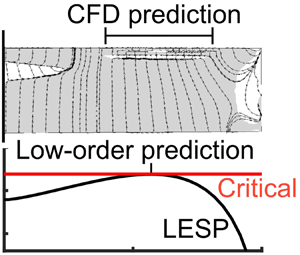Article contents
Flow criticality governs leading-edge-vortex initiation on finite wings in unsteady flow
Published online by Cambridge University Press: 08 January 2021
Abstract

Leading-edge-vortex (LEV) formation often characterizes the unsteady flows past airfoils and wings. Recent research showed that initiation of LEV formation on airfoils in two-dimensional flow is closely tied to the criticality of the so-called leading-edge suction parameter (LESP). To characterize the LEV initiation on wings in three-dimensional flow, a large set of pitching wings was studied using Reynolds-averaged Navier–Stokes computations (computational fluid dynamics, CFD). The CFD results showed that the pitch angle and spanwise location for LEV initiation varied widely between the different wings. The same cases were also analysed using an unsteady vortex-lattice method (UVLM), which assumes attached flow. Low-order prediction of LEV initiation is assumed to occur at the pitch angle when the UVLM-calculated LESP at any point on the wing span first becomes equal to the pre-determined critical LESP for the airfoil. For all the cases, the predicted pitch angles and spanwise locations for LEV initiation from the low-order method agreed excellently with the corresponding CFD predictions. These observations show that LEV initiation on finite wings is governed by criticality of leading-edge suction, enabling the prediction of LEV initiation on an unsteady finite wing using attached-flow wing theory and the critical LESP values for the airfoil sections.
- Type
- JFM Papers
- Information
- Copyright
- © The Author(s), 2021. Published by Cambridge University Press
References
REFERENCES
- 14
- Cited by



